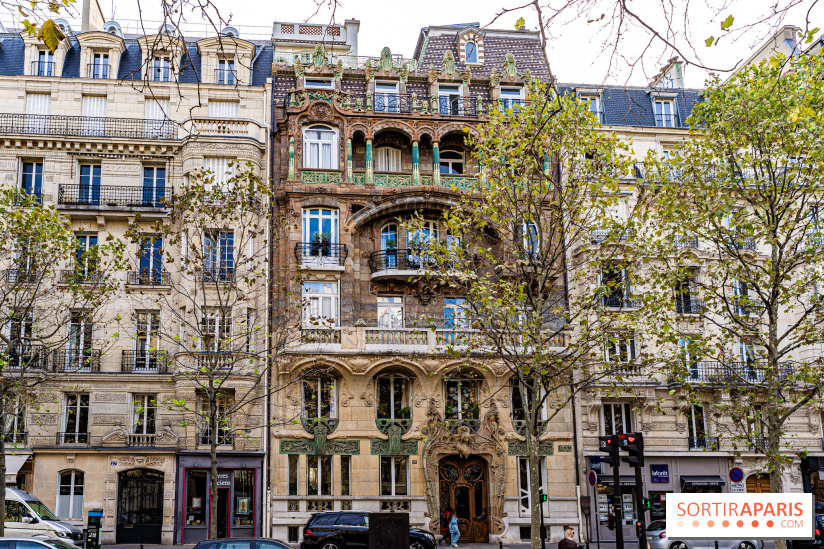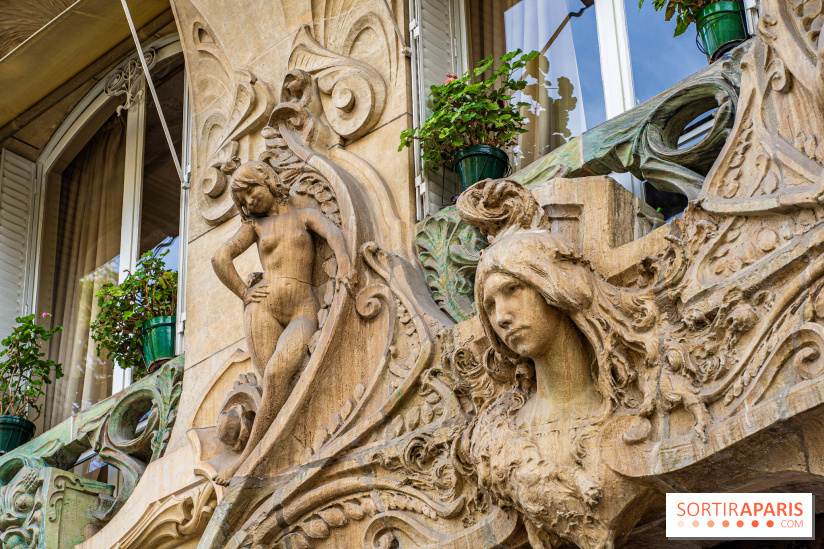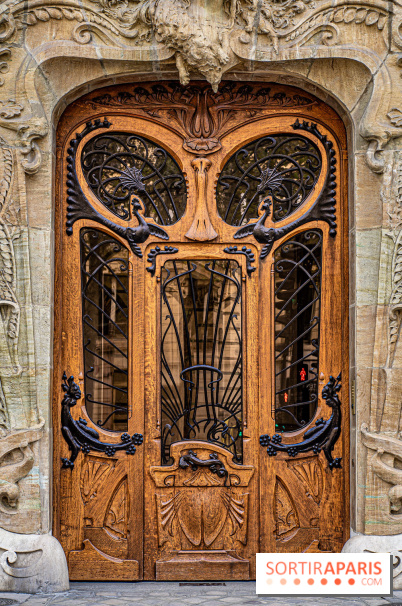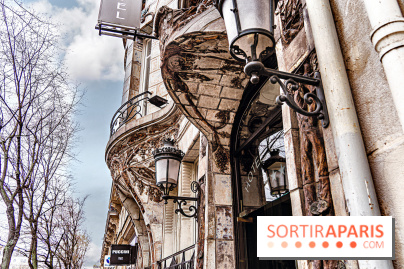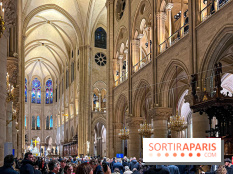In the creative effervescence of the early 20th century, Jules Lavirotte offered Paris a testament to bold, innovative architecture. His Immeuble Lavirotte, located at 29 avenue Rapp, is one of the capital's Art Nouveau gems, a bygone era (1890-1910) whose brilliance lives on in such creations as the Castel Béranger and, of course, the building in question. In 1901, the City of Paris honored the building with the prize for the most beautiful facade, recognizing its audacious blend of forms and materials.
Just a stone's throw from the Eiffel Tower and the Champ de Mars, theImmeuble Lavirotte 's façade stands out for its rich ornamentation and profusion of detail. One is quickly struck by the deliberate asymmetry and harmony of the plant and animal ornamentation, which merges with the free curves typical ofArt Nouveau.
For this façade, Jules Lavirotte once again called on his favorite ceramist, Alexandre Bigot. Bigot's signature is to be found in the flamed stoneware above the ground-floor windows.
Do you know the juicy anecdote about theImmeuble Lavirotte? Among the ornamental treasures that characterize the façade, the main door is particularly striking. This masterpiece of wrought iron and chiselled wood is framed by splendid carved stone bas-reliefs. They represent climbing foliage leading to a gentle feminine face, the embodiment of Nature. A close look at the door reveals its phallic shape, rumored to be the architect's deliberate intention to symbolize coitus at the entrance to the building. When the facade was completed in 1901, this artistic audacity caused a scandal among the Parisian elite! This anecdote adds a layer of mystery and exuberance to theLavirotte building, inviting admirers ofArt Nouveau to explore, with amused curiosity, the subtle allusions and expressive freedom embodied in Jules Lavirotte's architecture.
This artistic daring was not limited to a single building. Lavirotte left his mark a little further afield, in Square Rapp, with another building just as captivating, but less overcrowded, thus completing a visual experience that attracts as much as it questions.
To extend the experience, head to the 8th arrondissement to admire another Jules Lavirotte feat: the Céramic Hôtel. Commissioned by Amélie Russeil, a friend of the architect's wife, to distinguish her establishment, Lavirotte created a remarkable façade reminiscent of Gaudi' s boldness in Barcelona. The facade, vibrant with ceramics and detailed sculptures, won him the Paris facade competition in 1905. Between theImmeuble Lavirotte and the Céramic Hôtel, we pass through a living account ofArt Nouveau in Paris, revealing Lavirotte 's boundless innovation and imagination in urban architecture.
Jules Lavirotte's more or less hidden allusions enrich the discovery experience and add narrative depth toArt Nouveau, a style where imagination comes alive and invites reflection. Today, the building is an essential stop on any architectural tour of Paris, bearing witness to an era when architecture transcended stone to touch the viewer at the very heart of its aesthetic.
To discover this architectural gem, go to 29, avenue Rapp, 75007. The Métro station École Militaire (line 8) takes you to the gates of this journey through time, whereArt Nouveau reveals its deepest essence and most seductive audacity.
